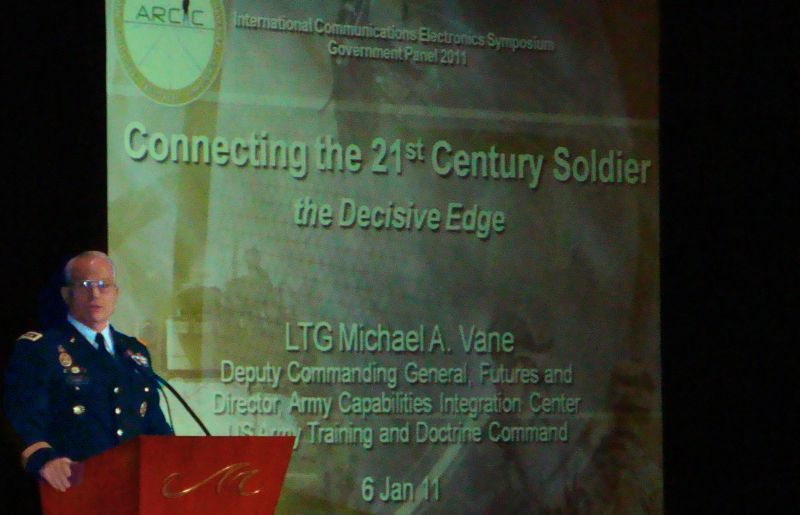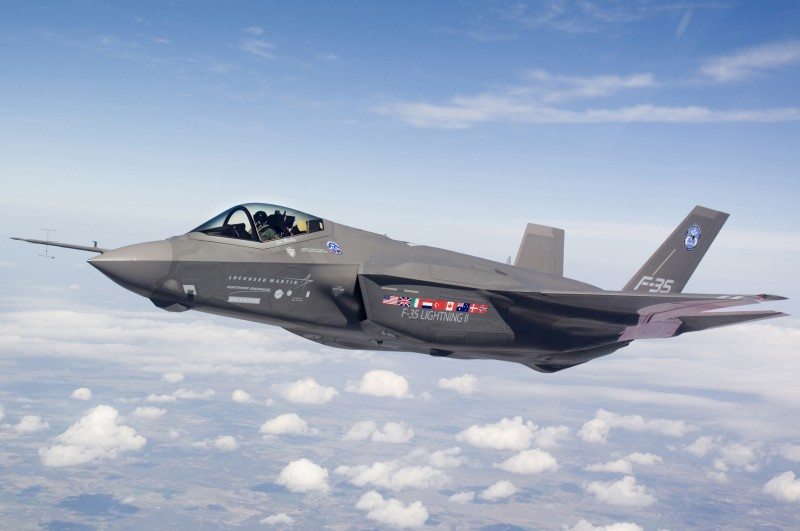The Army is exploring a wide range of cutting-edge technologies such as solar-powered battery chargers, digital mapping technology, alpine goggles with a head-mounted GPS display screen, handheld smartphones for the dismounted Soldier, and more discussed at the International Consumer Electronics Show in Las Vegas, Nev., Jan. 6-11.
“There is a very important role that technology plays for the Army,” said Lt. Gen. Michael Vane, director of the Army Capabilities Integration Center at Fort Monroe, Va. “We are constantly and actively engaged with the scientific community to leverage the leading-edge technologies as well as innovate and develop new ideas,” he told an audience of public and government attendees Jan. 6 at the show.
Vane explained that the Army is deeply immersed in identifying, developing and integrating the best emerging technologies able to help Soldiers in current and future conflicts.
“The new norm of digital and space literacy is a reflection of the technological advances that continue to facilitate the ways in which Soldiers access, acquire, move or process information on the modern battlefield,” he said.
Vane’s presentation at the show: “Connecting the 21st Century Soldier — the Decisive Edge,” broadly outlined some of the key trends expected to characterize conflict in coming years and the role of emerging technologies therein.
Central to this discussion was the need to harness new technologies and “network” the dismounted Soldier on the battlefield.
Also fundamental to the discussion was a description of the important blend of art and science required to execute Mission Command – the ways in which the future force must possess the ability to visualize, describe, direct and lead forces against a hostile, thinking and adaptive enemy, Vane explained. Mission Command involves the merging of a commander’s professional judgment with the best available technologies.
Overall, the Consumer Electronics Show featured more than 140,000 attendees and 2,700 companies presenting new products and the promise of emerging technologies.
Twenty-two top industry CEOs provided keynote speeches including Microsoft’s Steve Ballmer, Verizon’s Ivan Seidenberg, Audi’s Rupert Stadler, Samsung’s Boo-Keun Yoon, Ford’s Alan Mulally, Netflix’s Reed Hastings, Cisco’s John Chambers, Xerox’s Ursula Burns and GE’s Jeffrey Immelt.
In total, there were 250 different sessions at the CES. Also at the show, Ford unveiled its new electric car, the “Ford Focus Electric.”
The CES provided occasion for Vane to meet with industry partners and explore potential military applications for a host of emerging technologies; in some cases, technologies on display closely resembled developmental efforts already underway within the Army.
For instance, the Army’s Future Force Integration Directorate recently completed a pilot program at Fort Bliss, Texas, which explored a range of possible uses for smart-phone technology on the battlefield.
Referred to as Connecting Soldiers to Digital Applications, or CSDA, the pilot evaluated digital smart-phone technologies by placing them in a host of operational scenarios and vignettes designed to assess the value of sharing battle-relevant information in real time.
“CSDA is about leveraging existing technologies to connect individual soldiers. This has an application for the generating force and the operating force. We’re looking at leveraging civilian technologies. The Army is a learning organization,” said Rickey Smith, who directs the Army Capabilities Integration Center – Forward.
“Knowing where you are and where the enemy is are two essentials of any operation. Sharing information in real time is a valuable component of Mission Command.”











